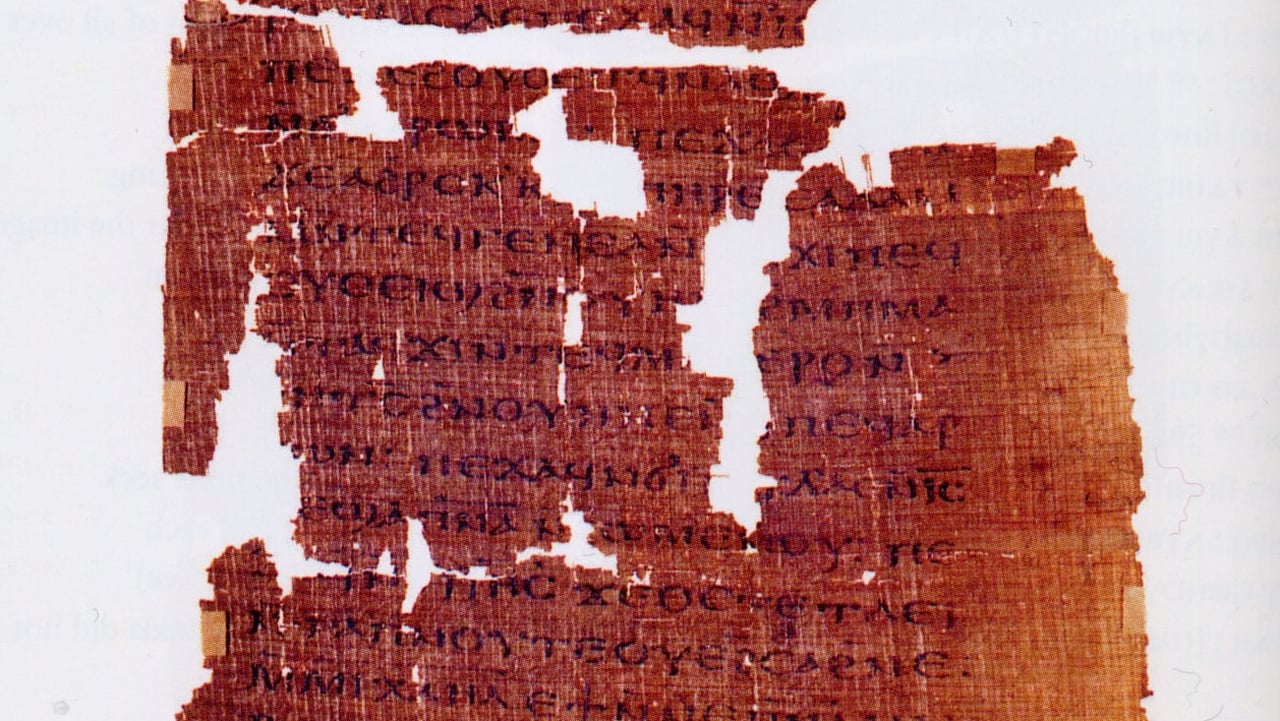

OK, buckle up. You are going to hear from the only one in the world who understands the Gospel of Judas. Not boasting, just stating a fact so we can set this explanation in the proper context. I am not just positing another opinion. I am, for one thing, a PRACTICING GNOSTIC, or as we are known today, a mystic. Gnostics were mystics. They, as mystics today, practiced a discipline of spiritual self-sacrifice. In a nutshell, the goal is the sacrifice of the individual person, or personality, if you will, in favor of assuming the being of the Master, or the one who holds the true Being of God. Sounds lofty. It is lofty. As some Eastern mystics have said, be prepared to offer your head on a platter (think John the B) and don't even think of crying about it. The Path isn't for everyone.I wrote two books on this subject, and you can find them by searching Amazon with my real name and key words "Judas" and "Saviors". In writing the first one on saviors in the Bible, I discovered what was in the Gospel of Judas. I knew about it before, sure, but not what it said. Only after an introduction to Dr. Robert Eisenman's work on other Apocryphal texts and especially the Dead Sea Scrolls did I get interested in Judas. Dr. Eisenman pointed out that the characters of Judas and Stephen covered the man, James the Just, in the canonical telling of the history of the Church, Acts 1 and 7 respectively. Acts 1 is the "replacement" of Judas as he dies, a cover for the succession of James to mastership, and Acts 7 is the death of Stephen as cover for the blasphemy stoning of James -- both events covered in sources other than the New Testament. Eisenman, being Jewish, didn't recognize the living Masters tradition, but I do (rssb.org). I decided to look into the character Judas in the one place he should really reveal himself, the so-called "Betrayal": Matthew 26, Mark 14, Luke 22, and John 13/18. Yes, Judas is James in nearly every line. The proof is in the Nag Hammadi Apocalypses of James and Peter. This is what my second book is about, written as a sequel to the first, after learning what Eisenman taught me. There will be this, and much more than this, coming out in the near future. I am still learning. It is my life's work now to bring this realization to the public awareness. I am not a Christian-basher. I used to be one. SO,God bless all who want to learn the truth about this. Salvation awaits. Not salvation from death, but rebirth.... That's mysticism. :)
... View MoreNational Geographic presents a documentary on the controversial gnostic gospel known as The Gospel Of Judas.It presents the backstory about how it was discovered,authenticated and the history behind it.It was analyzed by experts and scholars to provide an accurate story on what the content of the gospel which highlights a different view on Judas Iscariot with regards to the passion and death of Jesus and the events surrounding Christian history particularly during the time of Ireneaus, who himself condemned the said gospel in 180 A.D.The documentary presents first how the gospel was discovered in the caves of Egypt.It highlights how it was stolen once and how it was kept hidden inside the vault for sixteen years that led to deterioration of its papyrus.Also,it narrates the story of how a former antiques dealer got possession of it and provided it to experts and scholars for its restoration and analyses.It was obvious the painstaking effort it needed for its restoration and how it was authenticated through carbon dating at the Physics Center of University of Arizona.It was evident that the newly found Gospel was authentic as it was carbon dated back to 280 plus/minus 60 years and it was written in coptic writing.It was indeed the same gospel that Ireneaus rallied against.After its authentication,the story it narrates was revealed to the viewers.It tells of a special relationship between Jesus and Judas Iscariot,the only apostle who best understood Jesus and his true teachings.Also,it provides unlikely character of Jesus like someone who laughs sardonically especially when his apostles fail to understand him.Also,it includes stories that are not in parallel with the other gospels in the Bible such as appearing as a child to his apostles for them to understand him more clearly.Finally,the act of betrayal made by Judas was made in obedience to Jesus' orders.It was evident that National Geographic made an effort to validate it.Despite the fact that I commend its staff for authenticating it and proving it to be far from being archaeological forgery,I felt that it is trying to push it as another version of Christianity.The effort it made to somehow validate it by presenting other gnostic gospels that existed like the Gospels of Thomas,Mary Magdalene,Philip and many others.Despite the fact that the Gospel of Judas contains a lot of unlikely characteristics of Jesus like someone who laughs a lot and many others that are not found in the four gospels in the Bible,it somehow has scholars in it who tried to provide credibility to its content.Sad but true.Too bad that it made its viewers to give attention to what this gnostics are saying.As Dr. Elaine Pagels stated,"They called themselves Christians.Not gnostics". Obviously,they are not gnostics but heretics.In the end,there are more questions asked than answered at the end of the documentary especially when events in history are being re- interpreted particularly how the gospels were chosen when everyone familiar with Christian history knows exactly how the Council Of Nicea came about.
... View MoreThis film chronicles the discovery of an ancient text, known as the Gospel of Judas, that offers a different view of the disciple who betrayed Jesus.How do we go about rating something that was made for television as a National Geographic special? The commercial breaks should be cut a bit better (on Netflix you are left looking at a blank screen far too long), but all in all it transfers to a 90-minute documentary well.More or less, all you need is Elaine Pagels, the undisputed expert on the Gnostic Gospels and related books. And she was here, so that worked. Some of the "this is probably how it happened" probably was not necessary. And the order of events was a bit odd at times...But, for history buffs and religious scholars, this was a good look at an old document that may be greatly important. (Even if it changes Christianity in no way, it changes our way of looking at the early churches and sects that sprouted up.)
... View MoreIt certainly presents some interesting ideas and findings about the less known gospels of Christianity. That Judas may have unwillingly been doing what Jesus asked him to do, that Jesus orchestrated his own demise, is certainly a new view for those of us raised on the 4 traditional gospels of Mathew, Mark, Luke and John. I wish they had been more reliable and more balanced in their reporting and less dramatic. For example, presenting the "upper room" in the show without telling us that it is certainly not the original place of the Last Supper as it is known to have been built much later. Additionally, they over dramatize the need to "burn the gospel of Judas" to carbon date it. In carbon dating only very tiny pieces need to be subjected to the tests, pieces a couple of square millimeters in size, but that they dramatize and hold back such information makes me wonder if other things were held back or changed to create a marketable show. Overall it's worth watching because it does stimulate an interest in finding out more, but the show itself should be taken with a grain of salt.
... View More